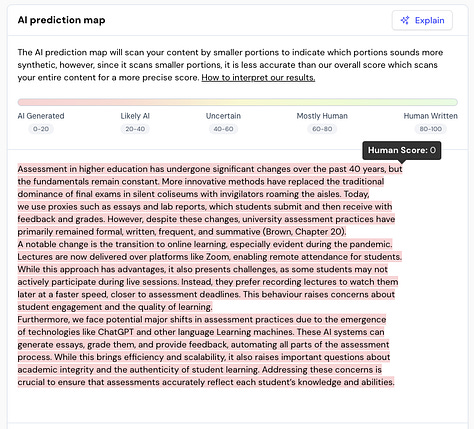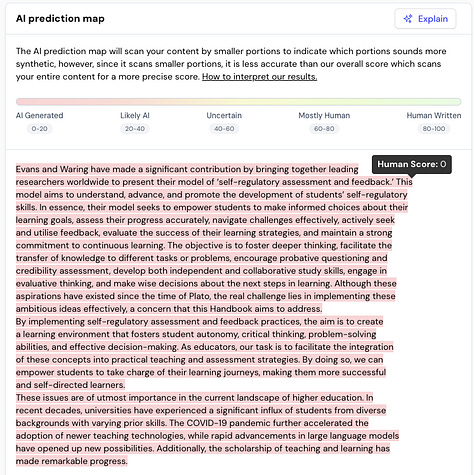John Hattie used LLM to write contribution to handbook, included fake reference
Further evidence of lack of academic integrity
I have shown that John Hattie plagiarised a total of 562 times and committed 212 errors that would have been avoided had he followed basic methodological safeguards. The university of Melbourne then undertook a flawed investigation that was apparently designed to find that Hattie had not, in fact, committed plagiarism and misconduct.
Now I can show that Hattie has used an LLM to write a recent foreword to a handbook published by Elgar. The evidence for this is clear and undeniable, as I set out below.
Most seriously, Hattie included a fake reference, which is a common mistake LLMs make. The following reference does not exist:
Núñez, J. C., Suárez, N., & Rosário, P. (2015). The relation between university students’ academic performance and teaching practices. Effectiveness of professors in higher education. Frontiers in Psychology, 6, 829.
The article as listed by Hattie does not show up in Google Scholar or the Frontiers in Psychology website. Searching for the exact title on Google shows Hattie’s foreword as the only result. The LLM appears to have made the mistake based on the following two real references, which are both on homework (a completely different topic) but which variously include the same authors, year, and journal:
Núñez, J.C., Epstein, J.L., Suárez, N., Rosário, P., Vallejo, G. and Valle, A., 2017. How do student prior achievement and homework behaviors relate to perceived parental involvement in homework?. Frontiers in psychology, 8, p.1217.
Núñez, J.C., Suárez, N., Rosário, P., Vallejo, G., Valle, A. and Epstein, J.L., 2015. Relationships between perceived parental involvement in homework, student homework behaviors, and academic achievement: differences among elementary, junior high, and high school students. Metacognition and learning, 10(3), pp.375-406.
It seems inconceivable that a human would have made this mistake, and is by itself a strong indication of LLM-authorship.
There are further sources of evidence. Winston AI, an AI detector, is very clear that the foreword is written by AI. On various sections it indicates a 0% chance of human authorship; it is very unusual for the detector to be so certain of AI authorship:



Further evidence comes from a Google Scholar search of articles that indicate that a number of phrases were used that have come into (more common) use since the advent of LLMs:
Overall, given the following pieces of evidence, it appears completely certain that the foreword was written by an LLM:
A fake reference
An AI detector indicating complete certainty of LLM authorship
The inclusion of 36 ‘post-LLM’ phrases
Publishing LLM-written work without acknowledgement is a serious breach of academic integrity, and is against the policies of both Elgar and the University of Melbourne. It provides clear further evidence of Hattie’s lack of academic integrity. I will report it to the university, but based on their conduct of the previous investigation I have little faith that they will conduct their investigation impartially.


Solid sleuthing and nice use of Datawrapper for reporting evidence. A few thoughts:
Might AI/LLMs help us find whether the citations were used accurately? scite.ai comes to mind here.
Are there any factual errors? I read parts of it and am not versed in the specific literature. Does the chapter make a contribution despite the use of LLMs?